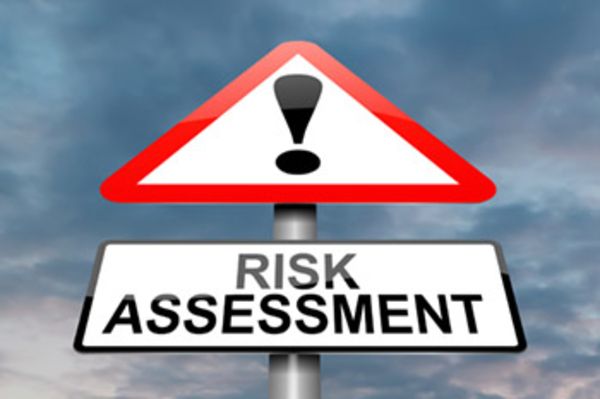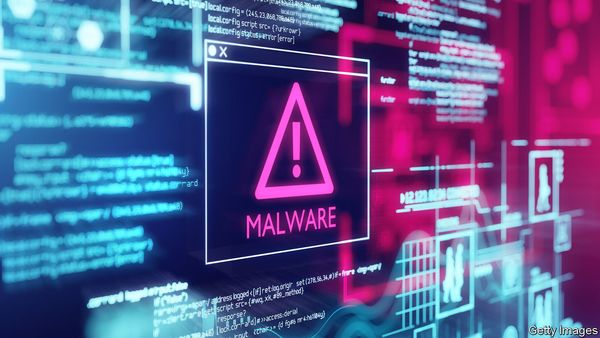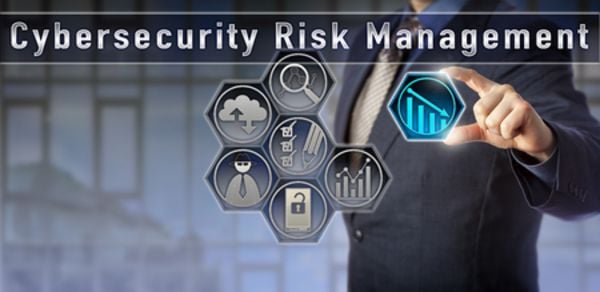
Another Look: Cloud Storage Security—How Secure Is Your Data in the Cloud?
September 25, 2019
Why Hyper-Convergence Can Help Prevent or Save Data Center Mishaps
October 1, 2019On this Page:
- What Is a Cybersecurity Risk Assessment?
- How to Perform a Risk Assessment? 5-Step Process
- How Do Cybersecurity Risk Assessments Help?
Cybersecurity is an essential part of running a business. Securing data, information assets, and company facilities should be (if it’s not already) made a priority for all companies. In our current business environment, most companies rely on information technology and information systems to conduct business. Because of this, there are some definite threats that every company should be aware of. Risk assessments are a vital part of not only being aware of these threats but also dealing with them. There is a difference between standard risk assessments, which could include workplace injuries. This article will focus on cybersecurity risk assessments.

Photo Source: techrepublic
What Is a Cybersecurity Risk Assessment?
Assessments identify Cybersecurity risks, prepare for the risks, and in worse case scenarios help fix the problem once it has occurred.
The National Institute of Standards and Technology or NIST defines risk assessments as a way to identify, estimate, and prioritize risk to organizational operations, organizations’ assets, individuals, and other organizations. Risk assessments also help protect the company’s mission, functions, image, and reputation.
The main reason a company should do a risk assessment is to help prepare for and respond in the best way possible to any threats. At the most basic level, risk assessments should identify relevant threats to the organization, identify the internal and external weaknesses, identify how these vulnerabilities could potentially be abused, and identify the likelihood it could be exploited.

Photo Source: sagedatasecurity
How to Perform a Risk Assessment? 5-Step Process
The first step in a risk assessment is to characterize the system. This part of the process will assist in determining the possible threats within the company system. Within this step, one should identify the process, function, and application of the system. Here is a checklist of the questions that should be answered to characterize the system.
- What is your system?
- What kind of data does the system use?
- Do you have a specific vendor for your system? (if so, who is it?)
- What are the internal and external interfaces the system uses?
- Who uses the system? Have a list of every user.
- What is the data flow?
- How does the information come and go? And where is it stored?
After the company has gone through the first step in the process, you should be able to list some of the primary threats. The second step in the process is to identify the threats. Depending on the system the company has in place may determine some of the threats you will have, but these are some examples of the threats you may be dealing with.
- Unapproved access to data. This could potentially be anything from cyberattacks, a malware infection, or even an internal threat. This is why it’s essential to know everyone who has access to this data.
- This brings us to the next example, misuse of information by an authorized user.
- Data leaks or exposure of information. This can both come in forms of accidental or intentional. There is always the chance of accidentally sending sensitive information to the wrong person.
- Loss of data can happen when back-up processes fail.
The third step in the process is to rate the impact of these risks. This is a relatively straightforward part of the process once you’ve identified the potential threats, rate how these threats (if it were to happen) would impact the company. If the potential impact could be great rate the incidence as high, if the effects were damaging but somehow recoverable, you could rate it as a medium threat. And if the effects were insignificant, you could label it low.

Photo Source: lifewire
The fourth step is to analyze the control environment. In this step, you will be looking to identify threat prevention, mitigation, and detection. Some of the controls you could be looking into are administration controls, authentication controls, organizational risk management controls, user authentication controls, and physical data center security controls. Again, give these different controls a rating.
The fifth step would be to determine a likelihood rating. Once you’ve analyzed your control environment, you can define the likelihood of these risks and how it may affect the system. Again give this a rating to see which parts of the system need work.
The sixth step is to calculate the overall risk rating. Once you’ve identified the different threats, rated the impact of these threats, analyzed your control environment, and determined the likelihood of risks, you can give your company Cybersecurity an overall grade. These grades can be from usual low threats to significant and severe threats.
Lastly, the seventh step is to implement and monitor new security controls and reevaluate risk. Once you have calculated an overall risk rating and figured out where the potential risks could be, fixing these potential problems is the next step. Maybe it’s changing to a better email filter, changing the data backup system, or hiring a third-party security team, once you have gone through the assessment your company will get a better idea of what you need. After you have changed these processes, reevaluate the risk. Again, these assessments should be done regularly.

Photo Source: may guard
How Do Cybersecurity Risk Assessments Help?
It is estimated that cybercrime around the world will cost businesses around 6 trillion dollars by 2021, and approximately 43% of cyberattacks target small businesses. Being aware of your current and potential risks can help you, and your company is prepared. If you don’t assess your risks, they can’t be managed appropriately. This means your company could be exposed to many different threats. This should be a continual process that happens regularly. Having an excellent IT department with expertise in these processes could potentially save your company time and money trying to fix the problem.

Photo Source: medium
A cybersecurity risk assessment can increase awareness. Educating the team on what potential threats could take place can help them be more mindful of their daily responsibilities. Risk assessments can also help mitigate future risks. Knowing the current risks can lessen the gravity of future risks and even prevent certain future risks. Lastly, having regularly scheduled risk assessments can help enhance company communication. Once these risks and threats are acknowledged, and the response to these threats are set in place, several various team members will work together. Having different members of the company working on these problems together from the beginning will increase company communication.

Photo Source: networkworld
Conclusion
We are in a digital age where technologies like artificial intelligence and ambient computing are increasing a company’s productivity, revenue, and making the user experience better. But these new technologies are also bringing in increased risks from cyber attacks. Being aware and ready for these threats is vital to your company’s success. Having a continual and regularly scheduled Cybersecurity Risk Assessment should be an essential part of company operations.

